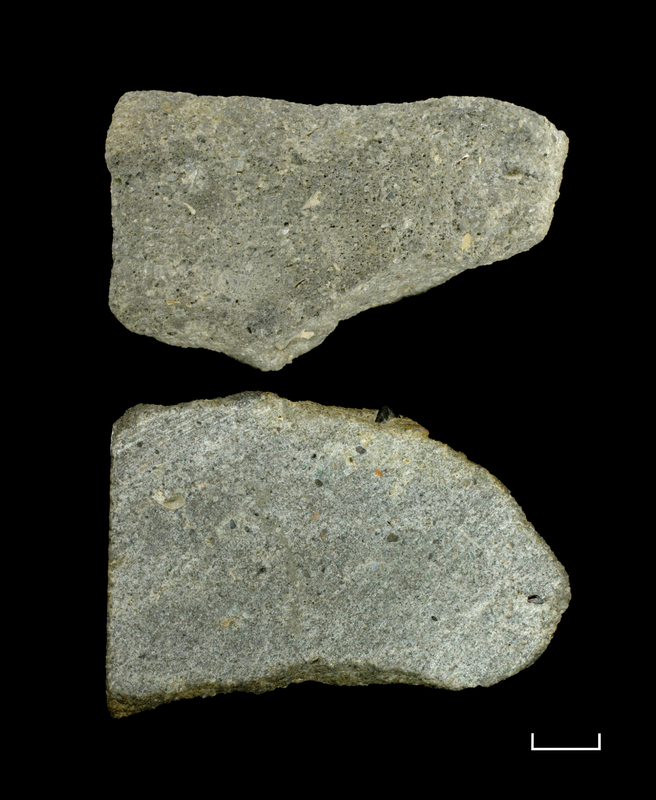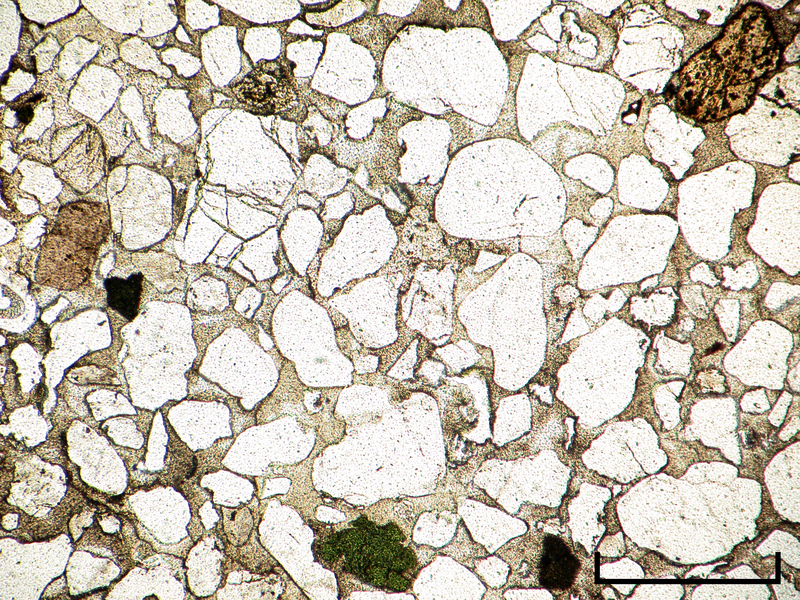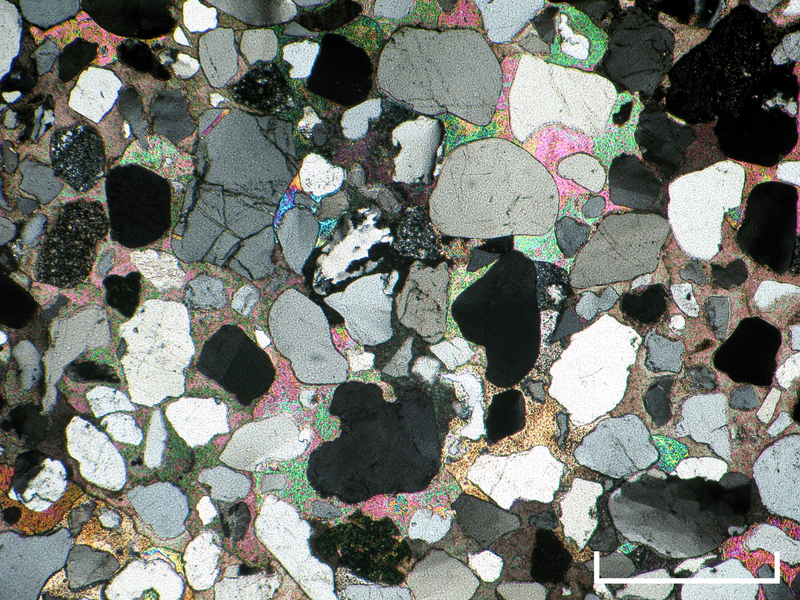- Home
- Rocks
- Type fossils
- Fossil Specimens
- Minerals
- Glossary
- Stratigraphic Chart
- Michel-Levy Chart
- Classification of igneous rocks
- University of Cambridge
- Department of Earth Sciences
- ESC Library
- Moodle
- Sedgwick Museum
- DoITPoMS
- Mindat.org
- Microfossils
- Bryozoans
- Webmineral
- Tree of Life
- CrystalMaker
- Virtual Microscope
L325 Sandstone, calcareous cement
Title
L325
Sandstone, calcareous cement
Subject
Age
Jurassic
Location
Portland Group, Shotover Hill, Oxford
Description
Hand Specimen
Pale grey rock, mainly medium to coarse grained quartz sand. Poorly sorted.
Small amounts of lithic fragments up to 10 mm across, and shell fragments.
Contains <15 vol% clay, making it an arenite.
Pale grey cement fizzes with acid, indicating that it is carbonate.
Small amounts of lithic fragments up to 10 mm across, and shell fragments.
Contains <15 vol% clay, making it an arenite.
Pale grey cement fizzes with acid, indicating that it is carbonate.
Thin-section
Quartz grains, sub-angular to sub-rounded, occasionally rounded, displaying undulose extinction.
Lithic fragments including flint and quartzite.
Some grains of feldspar.
Rare small green clasts.
Grain supported.
Cemented by a sparry calcite cement. The cement crystals are large, each enclosing a number of sedimentary grains.
Rock History
Deposited in an aqueous environment; grains are not rounded enough to have been deposited in an aeolian environment.
Advanced Notes
The rare green clasts are made up of a cryptocrystalline material, which may be a type of amphibole called glauconite, and some rather decomposed rhyolite or andesite.
Rock Name
Calcareous sandstone
Calcareous arenite
Calcareous arenite
Citation
“L325
Sandstone, calcareous cement,” 1A Collections, accessed April 9, 2024, https://wserv3.esc.cam.ac.uk/p1acollections/items/show/24.
Sandstone, calcareous cement,” 1A Collections, accessed April 9, 2024, https://wserv3.esc.cam.ac.uk/p1acollections/items/show/24.



